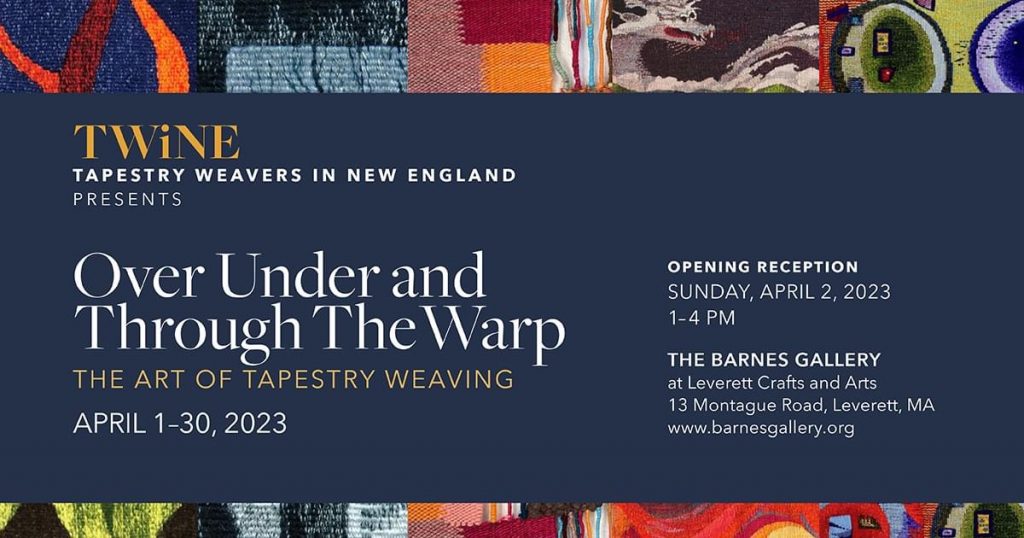During the year just past, 2020, I bought a record number of reference books on weaving, tapestry, and textiles in general. I started reading one, then another arrived in the mail so I started that one too. This went on until I had about six books partially read, and I realized that I’m not mentally agile enough to read that many books at once!

Threads of Life: A History of the World through the Eye of a Needle is not the first book that arrived in my mailbox, but now it is the one that I have focused on finishing ahead of the others. When I decided to set the others aside and read this one, I became enthralled. I can hardly put it down. The author covers some important historical events where needlework factored heavily, such as the Norman Conquest and its recorded depiction in the well known Bayeux Tapestry. Another chapter covers Mary, Queen of Scots, and her many embroideries used as pleas to those who might give her aid. But what makes this book a page turner for me are the everyday stories of women and men who find solace or find their voice through working with a needle and thread.
The chapter titles are compelling. “Unknown” is about the women (nuns) who worked on the Bayeux Tapestry and whose identities we’ll never know. Other chapters, with titles like “Frailty,” “Captivity,” “Loss,” describe the many ways that needle and thread have assuaged human suffering or given voice to those who felt unseen and unheard. You can imagine what some of these circumstances might be before even reading the book. Jews in camps embroidering messages and emotions on fabric as small and delicate as handkerchiefs, men in POW camps doing the same. Larger works, like banners, express political ideas and personal causes. In 1985, a massive banner of appliques and embroidered quilt blocks, was displayed in Washington, DC, to draw attention to the HIV/AIDS pandemic. It was meant to wrap around the Pentagon.
“The Ribbon didn’t just wrap around the Pentagon. It spread across the Arlington Memorial Bridge, around the Lincoln Memorial, down the Mall, around the Capitol, back up the Mall, back to the Lincoln Memorial and the Pentagon.. It was 15 miles long.”
These are just a few of the many stories that the author addresses with such sympathy and understanding. She herself has worked with people who have PTSD or who are imprisoned. She helps both men and women find a non-verbal way to express their emotions through applique, embroidery, and other needle and thread techniques.
The author is well traveled, and she discusses the textile traditions of a number of places throughout the world. In one chapter she describes the traditions of many cultures that save bits of fabric from the possessions of forebears or dear ones, that are then repurposed to make new garments or accessories that are precious to the one who gathered them. I could absolutely feel the truth of this in my own life, in the textiles I have saved from both my grandmothers. In another chapter she describes what clothing is chosen in various cultures to send their loved ones into the next life. Some cultures keep a bit of fabric or clothing to cherish the memory of the departed one, while other cultures hang the clothing of the dead near the grave, out in the elements, so that the clothes deteriorate similarly to the buried loved one.
In my own experience of gathered fabrics, I have almost all of my paternal grandmother’s quilts, and they are precious to me. As a child I have a sense of lying on at least two of the quilts I now have, poring over the many fabrics used in the patchwork. Even as a young child I wondered where all the many, many fabrics came from that contributed to these lively quilts. One quilt is a cacophony of pale floral calicos that were cut into elongated diamonds and sewn together. When I was quite a bit older I realized that this quilt’s pattern is well known, a six-pointed star. It’s a riot of diamonds, mostly in pastel colors that whisper to be noticed. I think I gazed at these fabrics for many hours when she put me down for a nap during the afternoons I stayed with her. This is my favorite quilt. It predates memory. At some point when I was still a young child my parents took the quilt. The last I remember of it before I took it into my own possession was that my parents kept it in the back of our family station wagon for use at the beach, where we lived on Long Island. Even as a child I knew that this was a travesty for such a wonderful piece of family history–all those small elongated calico fabrics that encapsulated an era, probably the 1930s and 40s, in the southern U.S. where my grandmother lived. I knew I had to save this piece of family history and take better care of it than my parents were doing. I still have it. I don’t have it hidden away in archival tissue, but I do treat it gently.
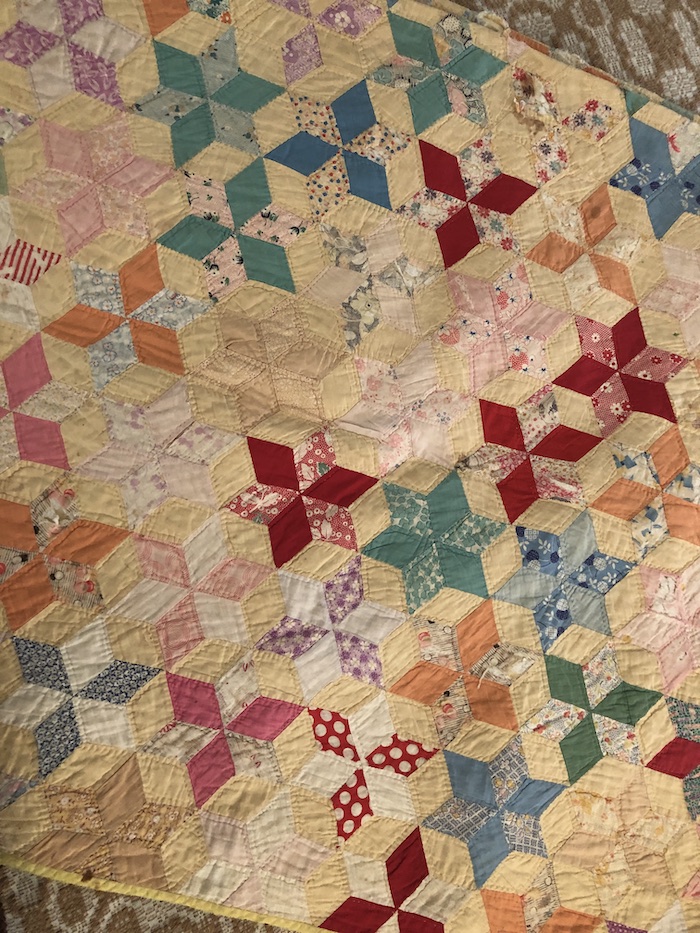
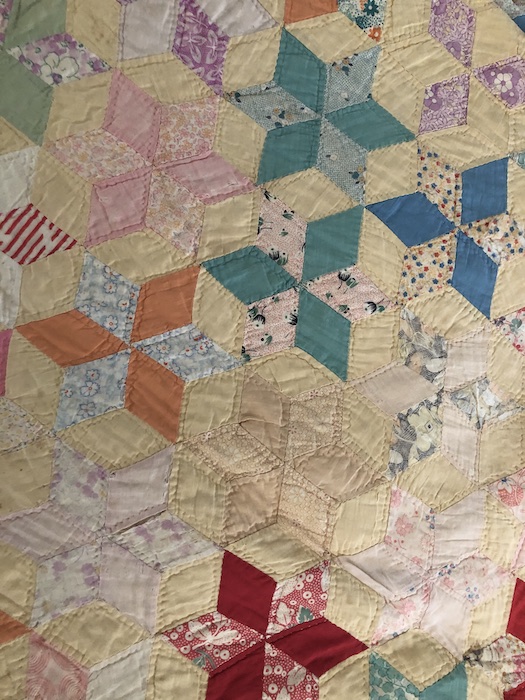
I have a set napkins and a couple of placemats that were most likely woven in the 1940s. There is a small tag on one of the pieces that identifies the piece as being woven in Berea, Kentucky. Although there are a couple of pieces that coordinate with the set of eight napkins, they may not have come from the same weaver or even the same craft school in Berea. They are also precious to me, although I don’t know who wove these. Several years ago I contacted Berea College hoping to learn some of the names of the weavers from those long ago decades, but no one wrote back to me. The lower two mats in the photo are woven in Dukagang, a woven structure that I am particularly fond of weaving myself. The upper most fabric is Monk’s Belt, another favorite! I always use these during the Christmas holidays.
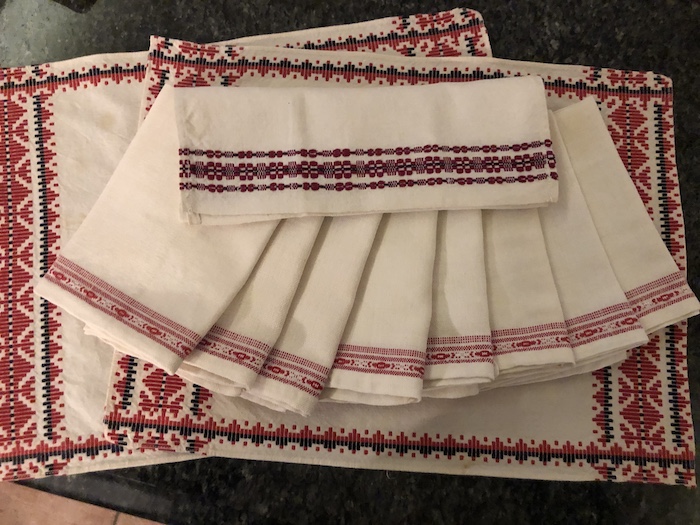
Melody, who is spending the fall and winter with us along with our younger son, expressed an interest in weaving, and I was happy to oblige. This is a photo of her weaving two kitchen towels at the end of a long warp.
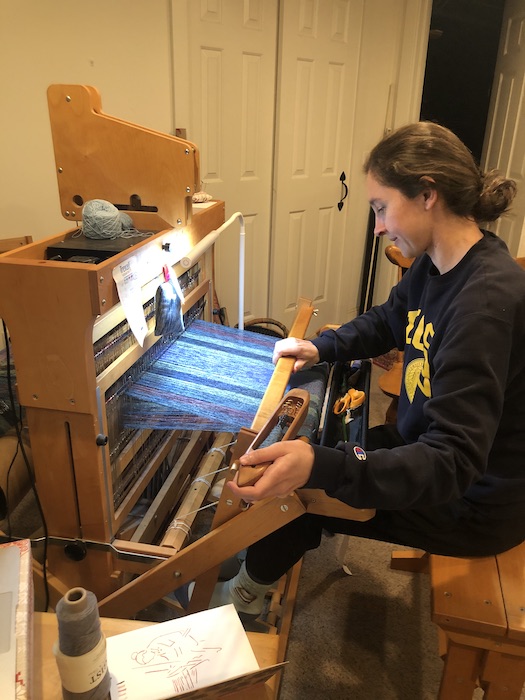
Next we may weave some linen bread bags together for our ongoing sourdough bread baking. This is the project I have in mind, from Handwoven Magazine.
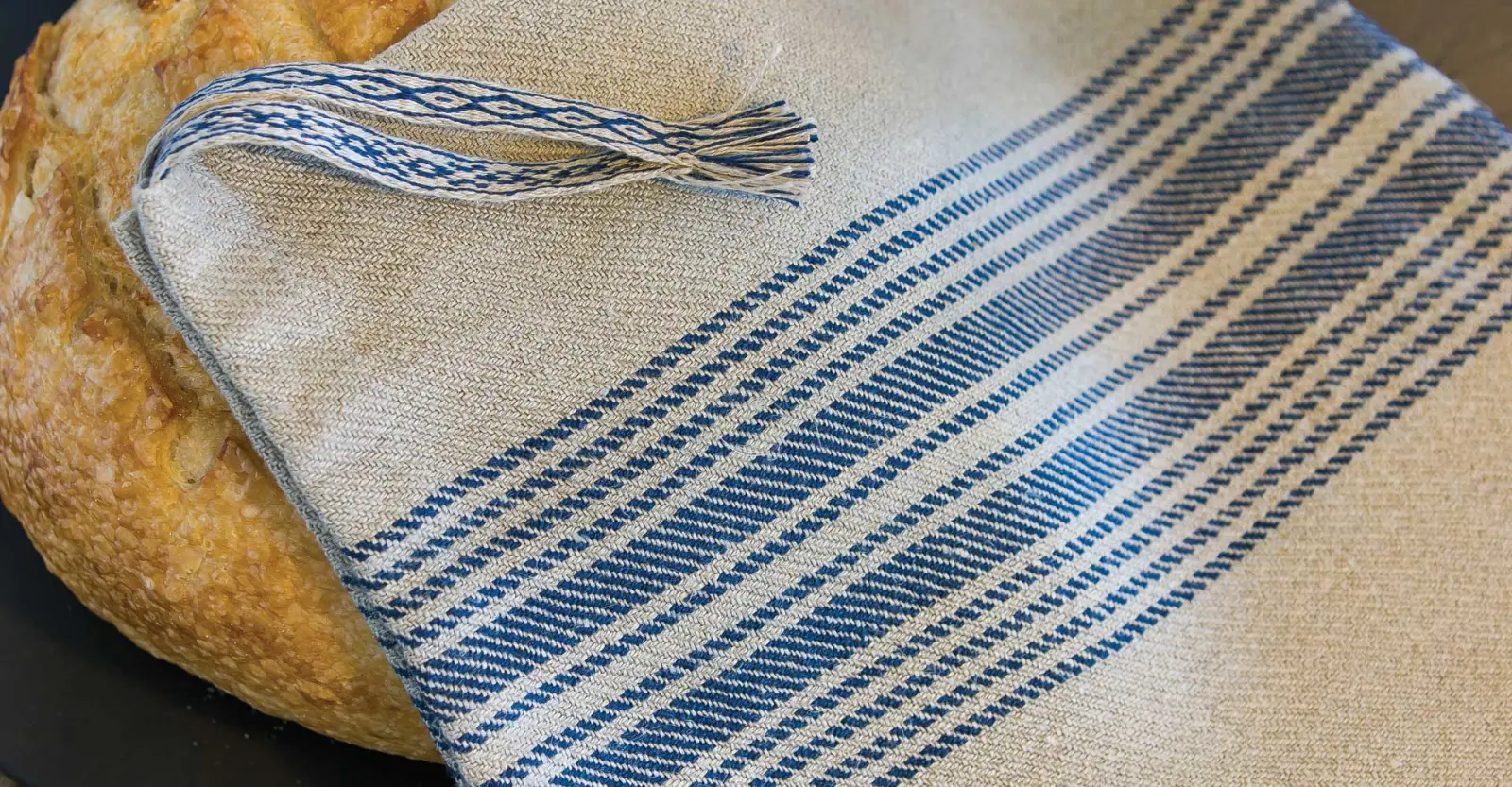
Naturally I hope all my handwoven items become heirlooms to my family, although I know this is highly unlikely! With the optimism of a typical grandmother, I hope one–or both!–of my granddaughters will be drawn to my textiles as much as I was to my grandmother’s. Time will tell.
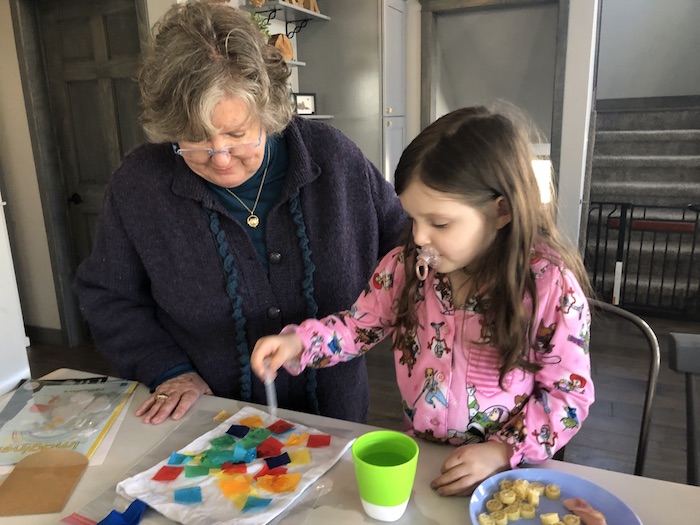
It comes as no surprise that I highly recommend Clare Hunter’s book, Threads of Life!

